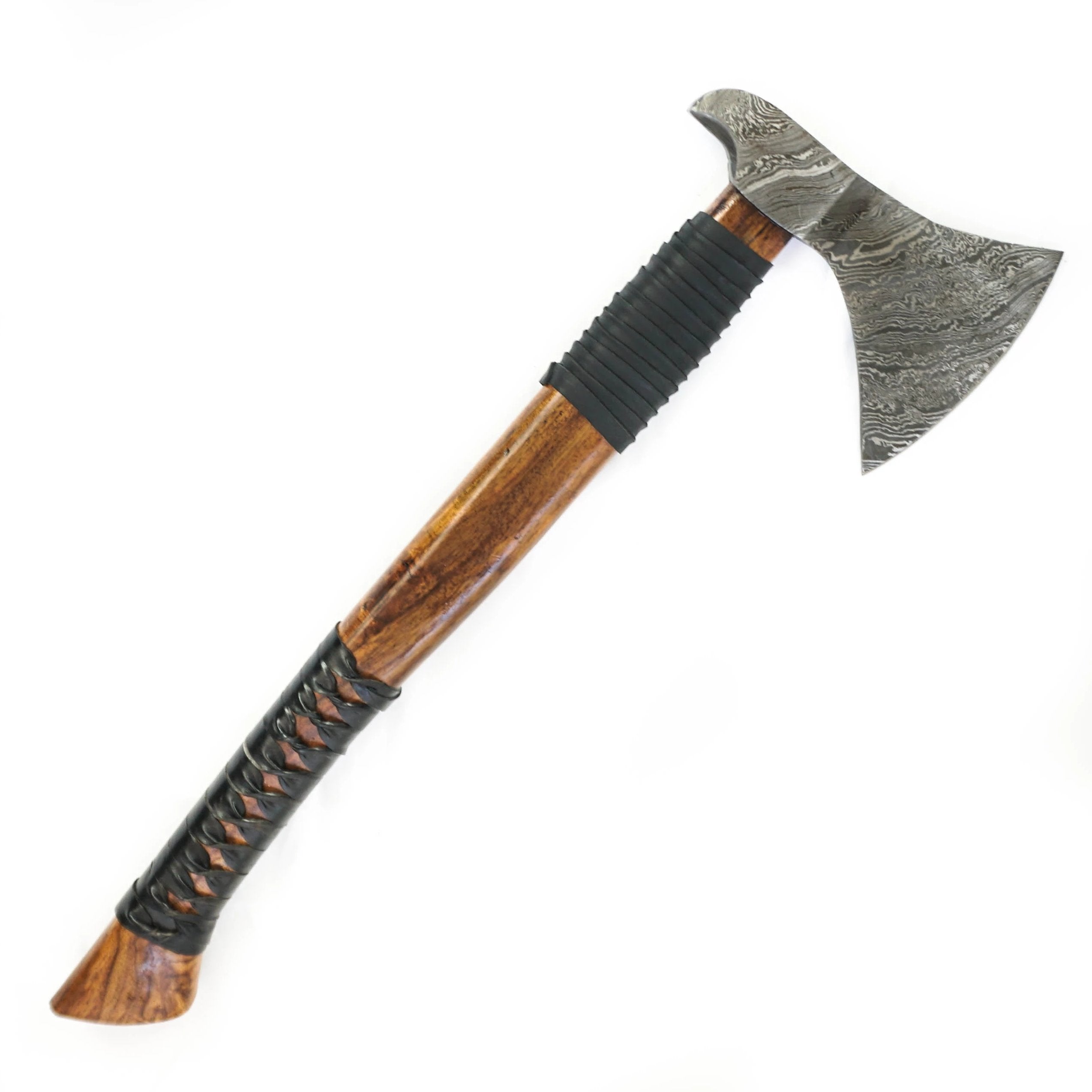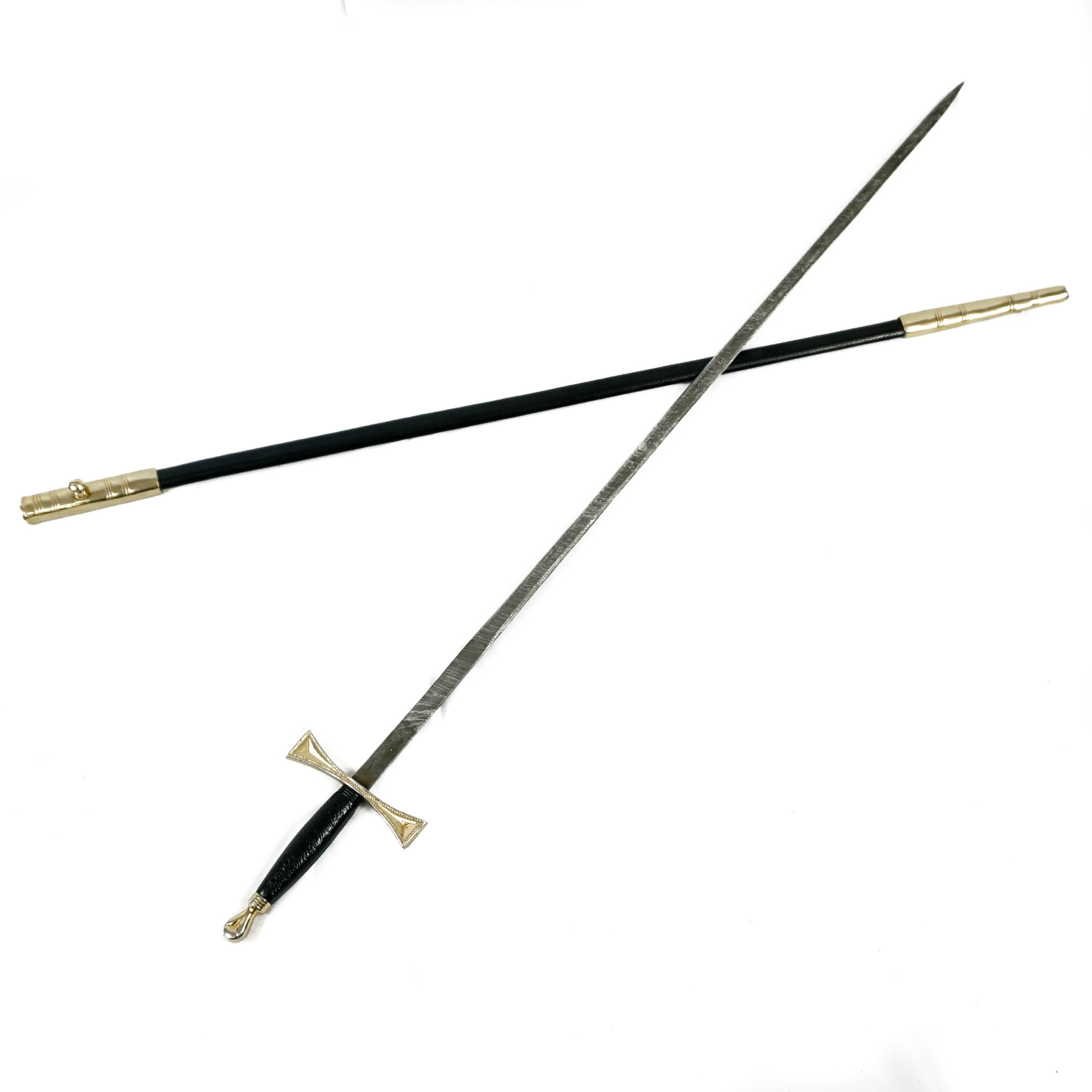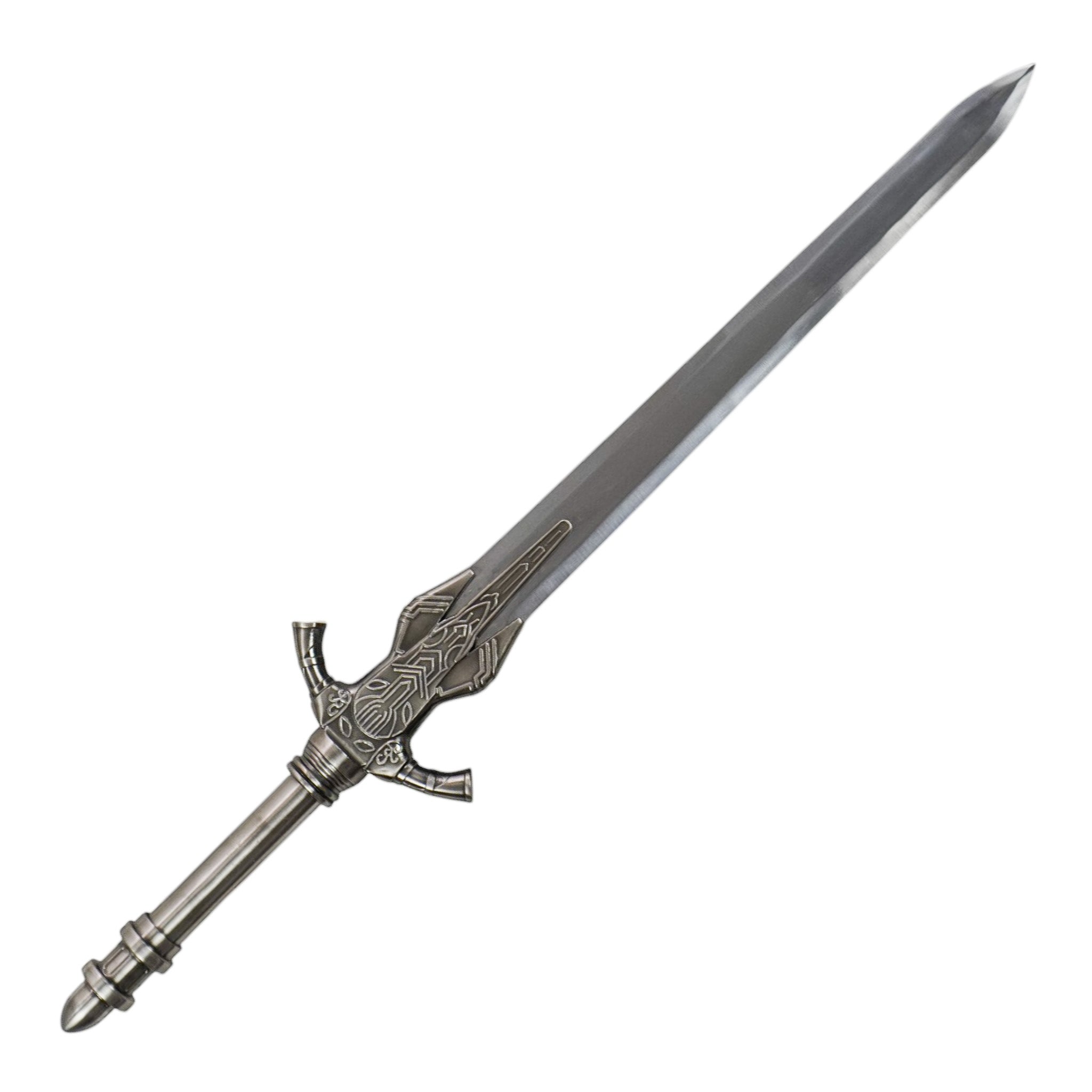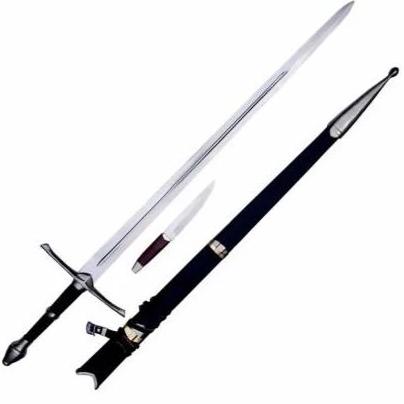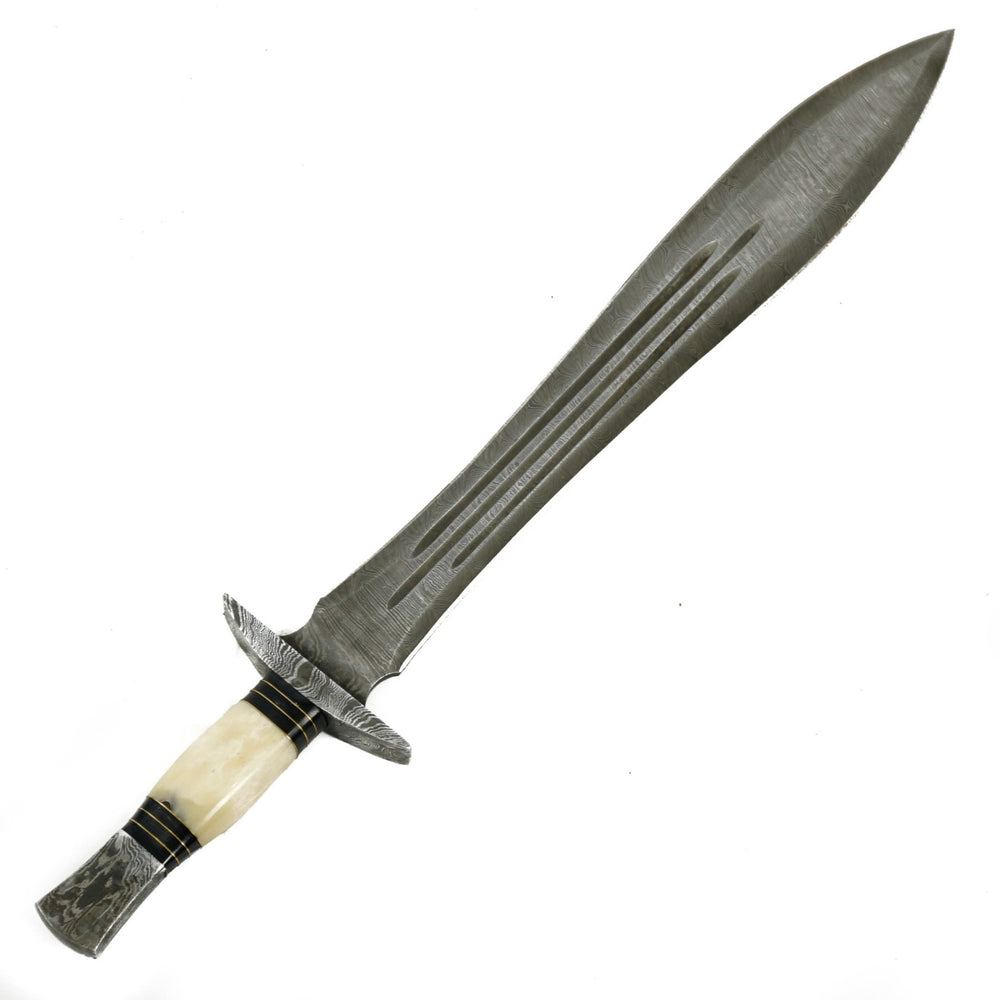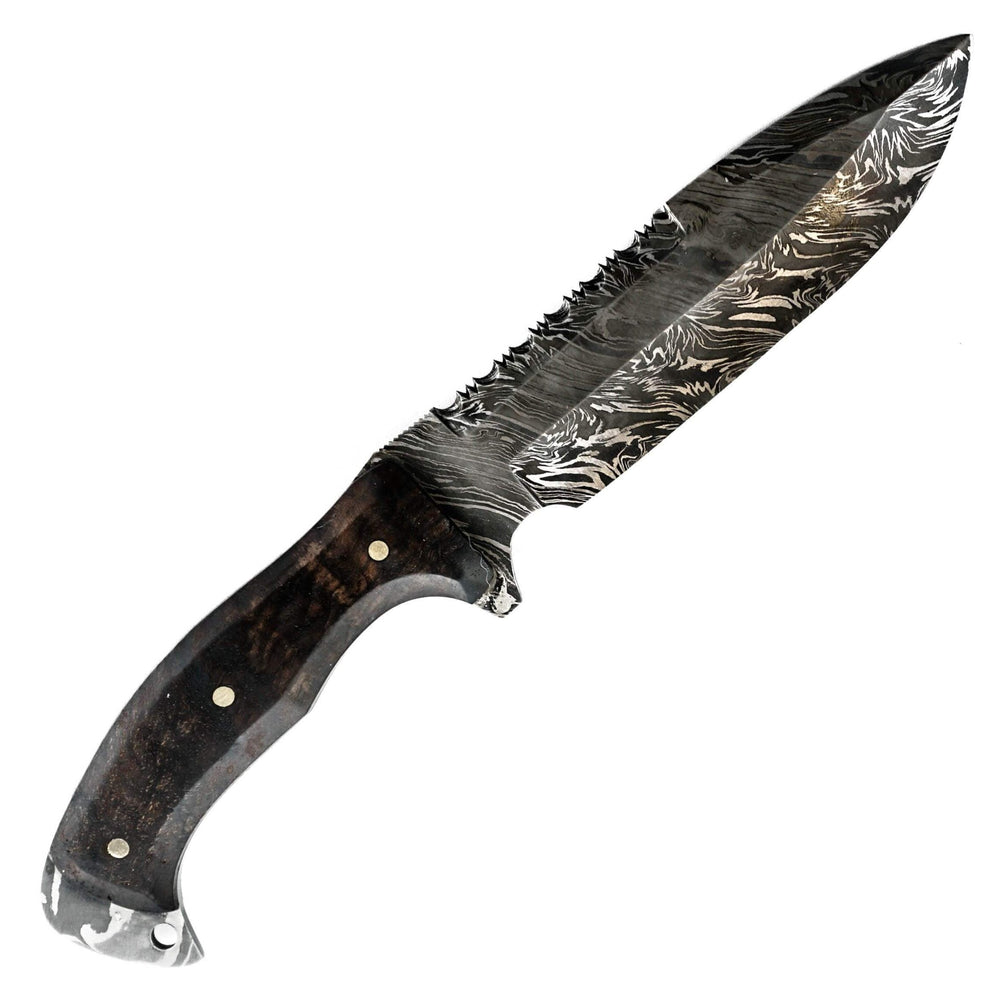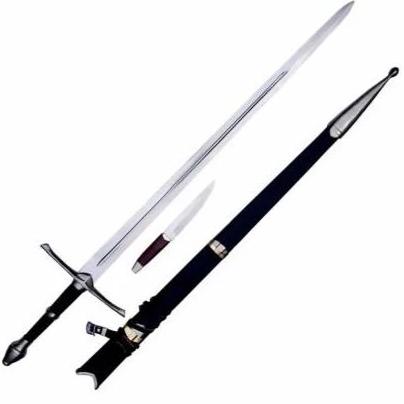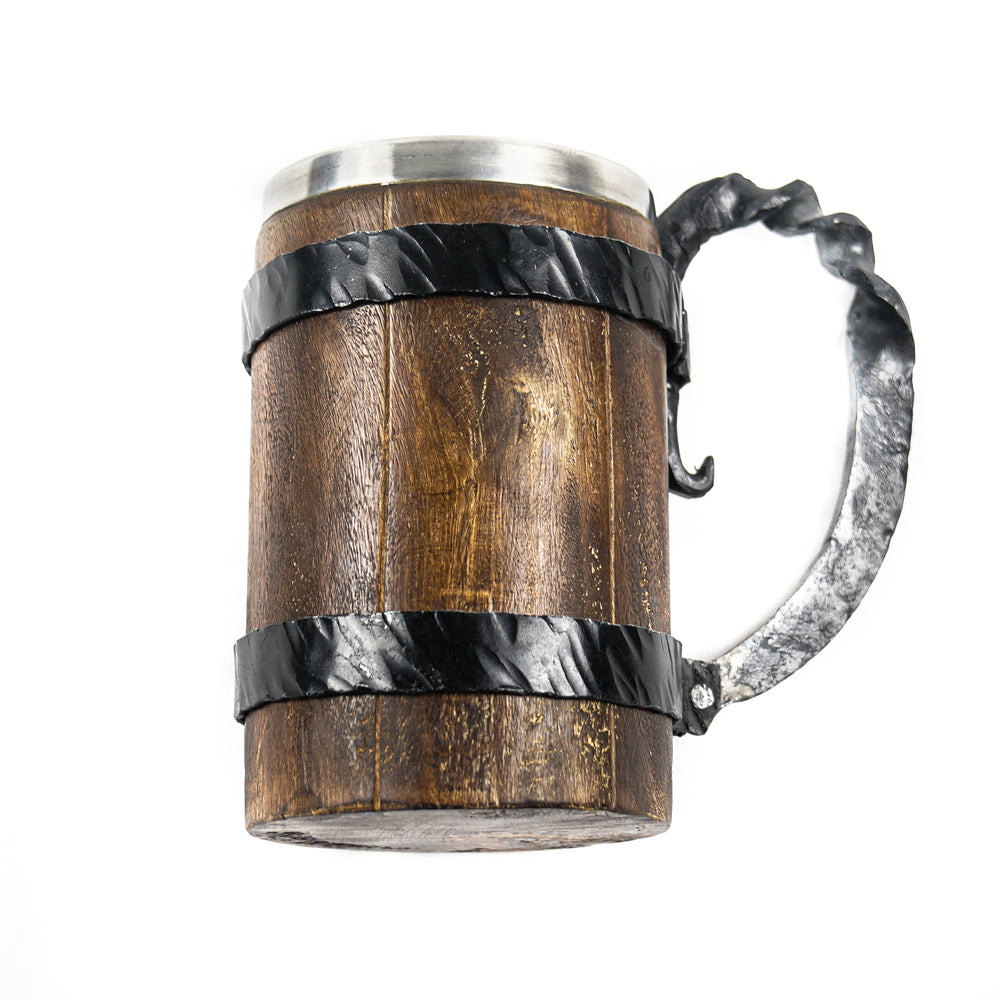The Scimitar Sword: A Symbol of Power and Precision
The enduring allure of the scimitar is a testament to its cultural significance and captivating history. This distinctive sword, born in the crucibles of the Middle East, has journeyed through time and across continents, etching its mark in the annals of history and the realms of popular culture. With its unique curved blade, the scimitar is a product of the blend of practicality, craftsmanship, and technological prowess that characterized ancient civilizations. Its story is intrinsically woven into the fabric of history, serving as a testament to human ingenuity, cultural intermingling, and the power of symbolism. This article delves into the rich heritage of the scimitar, tracing its origins, examining its symbolism, appreciating the craftsmanship involved in its creation, and exploring its place within modern popular culture.
Origins and Design
Our journey begins in the heart of the Middle East, an area steeped in the history of civilizations and cultures spanning millennia. It's in this rich, historical context that the scimitar sword took shape, its evolution guided by both necessity and artistry. The Middle East, with its vibrant cultural exchange and consistent military activity, was a perfect crucible for advancements in sword design and metallurgy. The region was an epicenter for technological and methodological innovations, a confluence of ideas where the art of crafting swords was continuously refined.
Variety in Design: Understanding the Scimitar
In the West, the term 'scimitar' came into use as a catch-all phrase to refer to a plethora of Middle Eastern swords. This diverse collection of swords displayed various shapes and designs, each with its unique attributes, reflecting the vast and vibrant cultural backdrop of the Middle East. The Persian shamshir, with its deep curve, the Turkish kilij, recognized by its flaring tip, and the Arabian saif, a straighter variant, all fall under the umbrella term of scimitar.
Despite the diverse designs, one characteristic remained constant: the curved blade. This curve, varying in degree from sword to sword, was not merely an aesthetic choice. It was an essential design feature, born from centuries of combat experience, honed and refined for efficiency on the battlefield.
The Curve of Efficiency: A Signature of the Scimitar
The typical scimitar boasts a curved blade that tapers towards the tip, a design that sets it apart from its straight-bladed counterparts. This particular design was a response to the specific needs of Middle Eastern warriors, allowing them to execute swift, cutting strikes in combat rather than the thrusting attacks that straight-bladed swords were more suited for. This slashing method, facilitated by the curved blade, enabled riders to maintain momentum in cavalry charges, striking their opponents without losing speed or balance.
This curvature also provided a distinct advantage when it came to durability. During combat, each strike a sword makes, either against another blade or armor, results in a distribution of impact force across the blade. In the case of a curved blade, such as that of a scimitar, this force is spread more evenly compared to a straight blade. This efficient distribution of force not only decreased the chances of the blade breaking under the stress of battle but also reduced the amount of wear on any single point of the blade.
The arabian scimitar, therefore, stands as a testament to the ingenious blend of practical design and efficient craftsmanship that evolved from centuries of warfare and cultural intermingling. Its unique curved blade — a distinguishing feature that enabled swift, deadly attacks and prolonged the weapon's lifespan — is more than just a physical characteristic. It is a reflection of the rich history and technological prowess of the cultures that crafted it. From the arid deserts of the Arabian Peninsula to the bustling markets of Istanbul, the scimitar's journey through time and space tells a fascinating tale of innovation, adaptation, and enduring cultural symbolism.
Symbolism and Significance
Steeped in history and marked by a distinct design, the scimitar sword carries a multitude of layers within its slender, curved form. Its design, born of the East, reflects a convergence of necessity, craftsmanship, and cultural aesthetic. As a result, the scimitar has transcended its primary function as a weapon to become a symbol of power, a signifier of status, and a prominent artifact within Middle Eastern history and culture.
From Battlefield to Status Symbol
The scimitar, due to its sophisticated design and lethal efficiency, soon became a symbol of power and status among warriors. Possession of such a sword reflected not just a warrior's battlefield prowess but also their social standing. The finer the sword, the higher the status of its bearer, turning these weapons into coveted items that were cherished and passed down through generations.
Simultaneously, the scimitar became intrinsically woven into the fabric of Middle Eastern history and culture. It was more than just a tool for battle; it was a testament to a society's technological capabilities, an artifact that bore the stamp of a civilization's prowess in metallurgy and craftsmanship. Over time, the scimitar emerged as a symbol of the region, an emblem representing the valor, nobility, and resilience of its people.
Synonymous with Horse Warriors
The association of the scimitar with horse warfare further enhanced its reputation and symbolic power. The sword was an ideal companion for cavalrymen, designed with the unique demands of mounted combat in mind. The curve of the blade facilitated slashing attacks while moving at high speeds on horseback, allowing riders to strike without breaking stride or losing momentum.
The efficiency of this design in mounted combat meant that the scimitar soon became synonymous with the formidable horse warriors of the Middle East. The image of a mounted warrior, scimitar raised, charging across the battlefield, became an enduring symbol of the power and courage of these ancient warriors. The scimitar, therefore, serves as a historical reminder of a time when battles were won and lost by the strength of horseback riders, their skill in handling these swords, and their unyielding courage.
Religious Significance in Islam
The scimitar carries not just historical and cultural significance, but also religious symbolism, particularly within the context of Islam. It was a common weapon used during the Islamic conquests and has been frequently depicted in traditional Islamic art and literature, often wielded by Islamic warriors.
The scimitar's role during these important historical periods has imbued it with a deep religious significance. Today, it is often featured in crests, symbols, and architectural motifs associated with Islamic cultures. The depiction of the scimitar in such contexts is not just a reflection of its historical and military relevance, but also its symbolic resonance within the collective cultural memory of these societies.
In conclusion, the scimitar is not merely a sword; it is a cultural icon, an artifact that embodies a rich tapestry of history, symbolism, and meaning. Whether displayed in a museum, featured in a historical text, or seen within a religious motif, the scimitar serves as a powerful reminder of the dynamic interplay between history, culture, and technology that has shaped our world.
The Art of Making Scimitars
Creating a scimitar wasn't merely a matter of practical craftsmanship; it was an art form steeped in tradition, and a science advanced through continuous innovation. Central to this process was a technique known as pattern welding, which transformed layers of different types of steel into a singular, resilient weapon. This method ensured the resultant sword possessed a balance of hardness and flexibility – qualities vital for a weapon that was as deadly as it was durable.
Pattern Welding: The Dance of Fire and Metal
Pattern welding, as the name suggests, involved the forging together of multiple layers of different steel types. This technique was more than just joining pieces of metal. It was a complex process that required exceptional skill, precise timing, and an in-depth understanding of metallurgy.
Each steel type brought unique properties to the composite blade – some layers provided hardness and the ability to maintain a sharp edge, while others offered flexibility and shock-absorption to withstand blows without shattering. The smith would meticulously arrange these layers, alternating between steel types, before subjecting the composite to the intense heat of the forge.
The layers of steel, once softened in the forge, were then hammered together, forcing the differing layers into a unified whole. The resultant sword, when cooled, contained a layered pattern that could often be seen on the blade's surface, hence the term 'pattern welding'. This approach offered a balanced compromise between durability and sharpness, resulting in a sword that could endure the rigors of battle while still being deadly efficient.
The Legend of Damascus Steel
A variant of the scimitar that stands out in the annals of sword-making history is the Damascus steel scimitar. Renowned for its strength, durability, and the distinctive wavy patterns that adorned its blade, these swords were an embodiment of superior craftsmanship and advanced metallurgical practices.
The distinctive patterns, resembling flowing water or sometimes a landscape of hills and valleys, were a direct result of the type of steel used in the crafting process - wootz steel. Wootz steel is a type of crucible steel characterized by its high carbon content, which when forged, resulted in visible patterns on the surface of the blade.
However, the process of creating Damascus steel was not merely about forging wootz steel into a blade. It was a much more nuanced process, involving specific temperatures, cooling rates, and working methods. This knowledge, a closely guarded secret passed down through generations, was a testament to the level of sophistication achieved by ancient blacksmiths. Unfortunately, the exact method of creating true Damascus steel was lost to time and remains a topic of considerable fascination and study to this day.
The legacy of Damascus steel is not just about its strength or the distinctive patterns on the blade. It's a tribute to the ingenuity and skill of the craftsmen who created these weapons. It serves as a reminder of a time when the process of making a sword was not just about crafting a weapon, but about the pursuit of excellence, the understanding of complex materials, and the embodiment of cultural pride.
In conclusion, the creation of scimitars, particularly those of Damascus steel, was a harmonious blend of art, science, and tradition. The blacksmiths who crafted these weapons were not just tradesmen, but artists and scientists, their forges acting as both studios and laboratories. Their work, embodied in the form of the scimitar, continues to stand as a testament to their skill, serving as a symbol of human ingenuity and the enduring power of cultural heritage.
Scimitars in Popular Culture
Despite its historical origins and traditional symbolism, the scimitar has not been confined to the annals of ancient times. Instead, it has successfully transitioned into the modern era, carving out its own niche within the realms of popular culture. Its distinctive design, rich history, and symbolic power have made the scimitar a compelling choice for characterization and storytelling across various forms of media.
An Icon of Fiction: Scimitars in Video Games, Movies, and Literature
The realm of video games, movies, and literature often requires a touch of the exotic and the dramatic to capture the audience's imagination. And the scimitar, with its unique curvature and historical mystique, offers precisely that. It has become the weapon of choice for a wide range of characters, from swashbuckling pirates and rugged desert warriors to enigmatic assassins and mystical characters.
In the world of video games, the scimitar often finds itself in the hands of powerful characters, its design enhancing the gameplay experience through swift, sweeping attacks that echo the weapon's historical use. Games like Prince of Persia and Assassin's Creed have leveraged the scimitar's aesthetic and historical significance to enhance their narratives and build compelling characters.
The movie industry, too, hasn't been immune to the scimitar's allure. It has been featured in numerous films set in the Middle East or involving pirate themes, from the desert epics of Hollywood to swashbuckling pirate adventures. The scimitar’s presence not only adds authenticity to the setting but also serves as a visual shorthand for a character's skills, status, or cultural background.
Literature, both modern and classic, frequently features the scimitar as well. It's often used as a tool to lend authenticity to a narrative or to symbolize a character's heritage or personality. Its unique design and rich history make it a compelling prop within the story, often becoming an integral part of a character's identity or journey.
Scimitars as Collectibles: A Blend of History, Art, and Craftsmanship
Beyond the realms of fiction, the scimitar has also found a place within the world of collectors and enthusiasts. These swords are appreciated not just for their historical significance, but also for their intricate craftsmanship, artistry, and aesthetic beauty. Every scimitar, with its delicately designed hilt and beautifully patterned blade, is a work of art, a tangible link to a bygone era.
The collectors' market for scimitars is driven by individuals who appreciate the finer aspects of these weapons — the history they encapsulate, the cultures they represent, and the craftsmanship they exhibit. From Damascus steel blades displaying mesmerizing patterns to hilts adorned with intricate carvings and precious stones, each piece is unique, carrying a narrative of its own.
Furthermore, the art of making scimitars continues today, kept alive by modern craftsmen dedicated to preserving this traditional skill. Whether crafting replicas for collectors or forging functional blades for martial artists, these artisans ensure that the legacy of the scimitar continues to live on, bridging the gap between past and present, between history and art.
In conclusion, the journey of the scimitar from the ancient battlefields of the Middle East to its place in modern popular culture and art collection is a testament to its enduring allure. Its distinctive design, rich history, and cultural significance make it more than just a weapon — it's a symbol of human ingenuity, a piece of our shared cultural heritage, and an object of artistic beauty that continues to captivate us, whether on screen, on the page, or in the palm of our hands.
Conclusion
As we trace the journey of the scimitar from the ancient forges of the Middle East to the popular culture of the modern world, it's clear that this exceptional sword is far more than a weapon. It embodies a confluence of historical epochs, cultural values, religious symbolism, and technological innovation, representing an enduring legacy of human craftsmanship, ingenuity, and artistry. The scimitar, with its distinctive curved blade, stands as a testament to the evolution of metallurgical science, the strategic demands of ancient warfare, and the aesthetic sensibilities of the cultures that birthed it.
Its influence extends well beyond its original geographical confines, finding its place within literature, film, video games, and the collections of enthusiasts around the world. From being the sword of choice for powerful characters in fantasy worlds to being coveted as beautiful artifacts and collector items, the scimitar's allure remains undiminished.
In every blade, every curve, every intricate pattern, the scimitar tells a story — a narrative of human progress, a testament to our shared cultural heritage, a tangible link to a bygone era. Whether appreciated as a symbol of power, a piece of art, or a weapon of choice, the scimitar continues to captivate us, reminding us of our fascinating and intertwined human journey. As we look to the future, the scimitar remains, serving as a bridge between our past and our present, and symbolizing the enduring power of human innovation and cultural expression.

